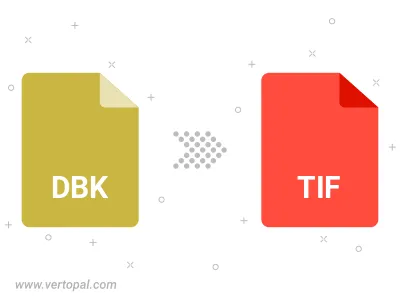Convert DBK to TIF
Convert DBK markup documents to TIF format, edit and optimize documents online and free.

The DBK file extension stands for DocBook Technical Document, a semantic markup language used for creating technical documentation in a format-neutral way. Initially developed for computer hardware and software documentation, it allows content to be easily converted into various formats like HTML and PDF. DocBook has become a standard for technical documentation due to its flexibility and open-source nature.
TIF, short for Tagged Image File Format, is a flexible and adaptable file format that was introduced in the mid-1980s by Aldus Corporation, now Adobe Systems. Primarily used for storing high-quality raster graphics and images, TIF files are widely adopted in professional environments such as graphic design, medical imaging, and desktop publishing due to their support for lossless compression and extensive metadata capabilities. The format's longevity and adaptability have made it a staple in image archiving and complex image editing tasks, ensuring consistency and high resolution across various platforms and applications.
Drag and drop a DBK file into the upload area to start conversion.
Select customization options for DBK to TIF conversion, then click Convert.
Give the converter a few seconds, then download your TIF file.

After setup, the Vertopal CLI tool converts DBK markup document seamlessly into TIF image.